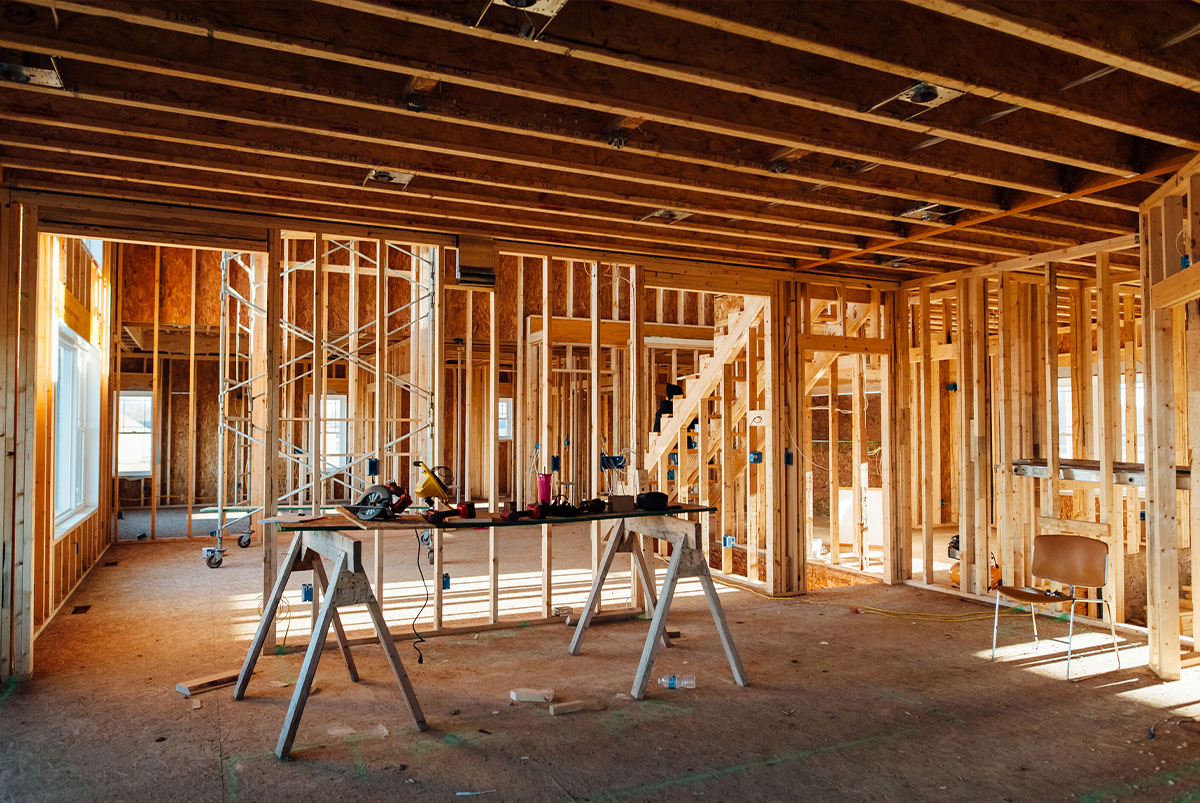Building a home can be a lengthy, expensive and risky process. And if something were to go wrong during the construction process, the developer might be on the hook for quite a bit of money.
Anyone interested in building a home wants to protect their initial investment. One of the best ways to keep these properties is with builder’s risk insurance, also known as course of construction insurance.
Builder’s risk insurance is a customizable insurance policy used by potential homebuyers to protect unfinished construction projects. These policies come in different forms and can be adjusted to meet your needs.
This guide will discuss what homeowners should know about builder’s risk insurance, including the different uses and limitations of getting a policy.
Who Needs a Builder’s Risk Insurance Policy?
Builder’s risk insurance can benefit any party with a financial interest in a property under construction, not just those in the construction industry. This can include:
- Property owners
- Home builders
- General contractors
- Subcontractors
- Lenders
- Architects and engineers
As a homeowner deciding to buy a policy, you’ll need to determine your personal liability. Not every construction project will have the same timeline, be sure to read your contract. Liability starts with the builder but transfers to the resident, which can happen at different points. In some cases, a builder might take out a policy on behalf of the future homeowner.
The difference between builder’s risk insurance and homeowners insurance
Homeowners insurance (or property insurance) and builder’s risk insurance will occasionally cover the same types of property damage. However, these policies are structurally different, so look at what’s covered.
Homeowners insurance provides coverage for a preexisting residence. These policies – often required to secure a mortgage – cover established dwellings, personal property, personal liability, and more.
Builder’s risk insurance only provides coverage for developing properties – no one is actively living there. Coverage might include vandalism, theft and specific weather events.
In some cases, both policies are needed. For example, if there’s a preexisting structure on a plot of land while an additional property is being built, homeowners must ensure all structures are covered. Depending on the insurance provider, you might be able to save by bundling these policies together.
What Does Builder’s Risk Insurance Cover?
Builder’s insurance coverage is essential for anyone planning to construct a new property. Depending on your insurance policy, all building materials, supplies and equipment kept on the construction site will be covered in the case of a qualifying event.
Your policy should clearly outline what constitutes a “qualifying event.” In most cases, these events will include human-caused damages, such as theft, vandalism or explosions.
Most policies will also provide coverage for certain “Acts of God” – like fires, lightning damage, hurricane damage and hail damage. Earthquake and flood damage might not be covered and may require the builder to extend their policy.
Depending on the language of the policy, coverage for economic losses might also be included. If an event causes the builder to lose rental income, pay additional interest or lose out on a sale, the policyholder could qualify for reimbursement.
Builder’s risk coverage exclusions
To receive compensation for a builder’s risk policy, you’ll have to start by filing a claim. However, Coverage is often limited. Unless a builder’s general liability insurance covers you, you might have to pay for certain repairs and replacements.
One of the most notable exclusions is ordinary wear and tear. If the builder’s equipment is damaged or breaks during use, your policy will not replace it. This can include rusting, mechanical breakdowns, corrosion and more.
Additionally, any event connected to the contractor or their organization – like employee theft and deliberate damages will – likely be denied. If this occurs and the homeowner is on the hook, they may need to initiate legal action.
Remember that earthquake and flood coverage are not standard. If you’re worried about earthquakes or flooding, you’ll need to purchase additional coverage. The cost of coverage will vary depending on the area’s history of natural disasters.
When coverage starts and ends
The term length for a builder’s risk insurance policy varies by contract. Generally, contractors want coverage to begin by the first day of construction and last until the possible inspection has been completed.
Coverage might need to be extended if the construction project lasts longer than planned. An accurate estimate of the project’s timeline can help you avoid purchasing excessive coverage or experiencing a lapse.
What Does Builder’s Risk Insurance Cost?
Many factors can affect the total cost of builder’s risk insurance for homeowners. For example, if you’re building your home in an area at higher risk of natural disaster or crime, your insurance costs will be higher.
Most general insurance companies offer some sort of builder’s risk insurance policy. But if you’re looking for other options, consider looking at an insurance exchange website or exploring additional resources.
As a general rule, you can expect the cost of builder’s insurance to be 1% – 5% of the total construction cost. So if the expected construction cost is $200,000, your builder’s insurance will likely cost between $2,000 – $10,000 for the entire project. Check the policy’s coverage limits so you know how much will be covered.
Note: construction costs are usually much lower than the total value of the property.
Is Builder’s Risk Insurance For You?
In most cases, anyone who wants to build a new home should invest in builder’s risk insurance. It’s the best way to manage your costs and provide protection from the unexpected. However, there’s a lot of variation within this industry, so you’ll want to pay attention to the fine print in your policy.
